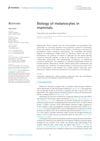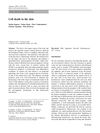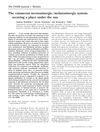Editor's Evaluation: Role of Distinct Fibroblast Lineages and Immune Cells in Dermal Repair Following UV Radiation-Induced Tissue Damage
June 2021
ultraviolet radiation UVR fibroblasts immune cells collagen neutrophils T cell subpopulations pro-inflammatory prostaglandin signaling CD4-positive cells CD8-positive cells DNA damage pro-inflammatory prostaglandins fibroblast proliferation papillary fibroblasts extracellular matrix inflammatory response infiltrating T cells COX-2 prostaglandin synthesis neutrophil infiltration UV radiation T cells prostaglandins COX-2 enzyme
TLDR Different types of sun exposure damage skin cells and immune cells, with chronic exposure leading to more severe and lasting damage.
The study investigated the effects of ultraviolet radiation (UVR) on skin damage and repair, focusing on the role of fibroblasts and immune cells. It found that both acute and chronic UVR exposure led to a loss of fibroblasts, cells that produce collagen, from the upper dermis in human and mouse skin. Acute UVR exposure triggered an increase in neutrophils and T cell subpopulations, and increased pro-inflammatory prostaglandin signaling. Depletion of CD4- and CD8-positive cells resulted in increased fibroblast depletion, DNA damage, and pro-inflammatory prostaglandins, and a reduction in fibroblast proliferation. Chronic UVR exposure led to a permanent loss of papillary fibroblasts and changes in the extracellular matrix. The study concluded that the loss of fibroblasts is primarily induced by a deregulated inflammatory response, with infiltrating T cells supporting fibroblast survival upon UVR-induced environmental stress. Inhibition of COX-2, a key enzyme for prostaglandin synthesis, significantly inhibited fibroblast depletion and neutrophil infiltration after UV radiation treatment.


